
|
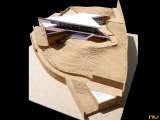
|
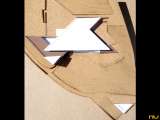
|
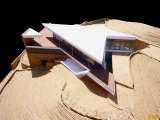
|
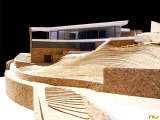
|
|
|
|
Rubiû°'s house. Plans |
|
In 1959, Antonio Bonet, who had been living in Buenos Aires since he went into exile in 1938, teamed up with the young architect Josep Puig Torné to develop a series of projects at different points along the Mediterranean coastline in the 1960s. Between 1959 and 1962, they designed and built this commission from Mr. Rubio for a single-family house in Salou, they would also design a series of interesting works in the vicinity, including the Van der Veeken House, the Chipre Apartments, Cala Viña, Reus or Madrid, among others. The architects’ association was dissolved around 1964, when Bonet decided to return to Spain permanently to set up his own studio.
The house is located on a plot situated in Cabo Salou near Cala Crancs, a rugged, rocky stretch of the Costa Dorada in which pine groves, cactus and other local species grow alternating with terraces and dry stone walls. As if he were abstracting the motion of the topography, Bonet’s design is based on two isosceles triangles that determine the position of the main and entrance walls and the orientation of the main facade facing southeast. Other minor details, like some internal or external walls, the terraces and flooring, the fireplace and the staircase, extend these geometries into other areas of the house, thus conferring consistency on the project. This is not the only time that Bonet uses triangles, we can also see them in Van der Veeken House and the Triangles in Cala Crancs.
Acces to the grounds is located on the upper part of the land, a large ramp then leads to the parking garage and the main entrance perched about 20 metres above sea level, boasting magnificent landscape views. One can access inside the house through the terrace of the main floor, which accommodates areas belonging to the day program: the living room and the kitchen-laundry room. The lower level contains bedrooms and services, the garage, a wine cellar and areas in relation with the garden. There is a third underground floor with a bar, dressing rooms and guest bedrooms for occasional use. The swimming pool sits on a lower platform near the sea.
The service areas (laundry, kitchen, pantry, rooms) are shifted to the interior of the house next to the retaining walls on the north and lit from the periphery or through a generously sized triangular courtyard, leaving the best views and sunlight for the bedrooms and living room. The main walls face southeast, giving rise to a 27 metre long-full glass facade facing the sea.
Except for the main entrance, rustic clay tiles cover the flooring in both the interior and exterior of the house, a material commonly found in Bonet’s work. The facade contrasts three elements: the stone walls supported on the slope at differing heights depending on their orientation, the light weighted white coloured stripes of slabs and large cantilevers, and the wooden windows and doors.
FAP |
|
Oks House
|
|
plans and models made by: 2008 - Daniel Lopez-Dû°riga, Laura Bonell |
|
ûLVAREZ, Fernando y ROIG, Jordi. Antoni Bonet Castellana 1913-1989. Barcelona: Colôñlegi d'Arquitectes de Catalunya : Ministerio de Fomento, DL 1996. ûLVAREZ, Fernando y ROIG, Jordi. Antonio Bonet Castellana. Barcelona: Santa & Cole Ediciones de DiseûÝo S.A. Centre d'Estudis de Disseny (CED) y Edicions UPC, 1999. ORTIZ, Federico y BALDELLOU, Miguel ûngel. La obra de Antonio Bonet. Buenos Aires: Ed. Summa, 1978. |






